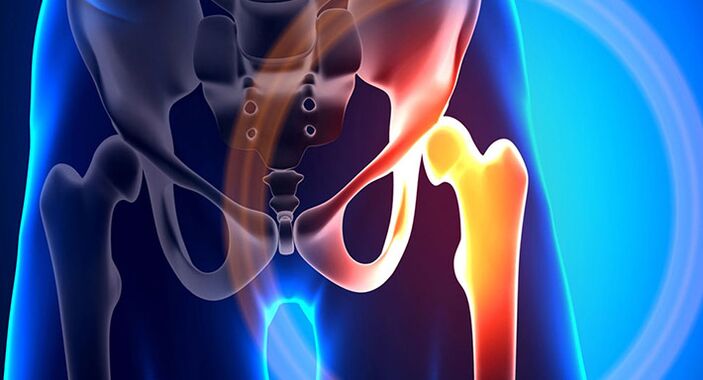
The hip joint is a large bony joint that connects the femur and pelvic bones, giving the limb the ability to bend, extend and abduct. Pain in the hip joint is a symptom of many inflammatory, infectious, degenerative and other diseases. The causes of hip pain vary widely, so a thorough diagnosis is essential.
Causes of hip pain
Pain in the hip joint varies – sharp and regular, constant and periodic. Most often, unpleasant sensations occur in people over 50 years old, although they can occur even in children. The causes of hip pain vary widely. The most common is coxarthrosis, a degenerative disease with wear of the articular cartilage, in which the bones begin to move closer to each other and become deformed.
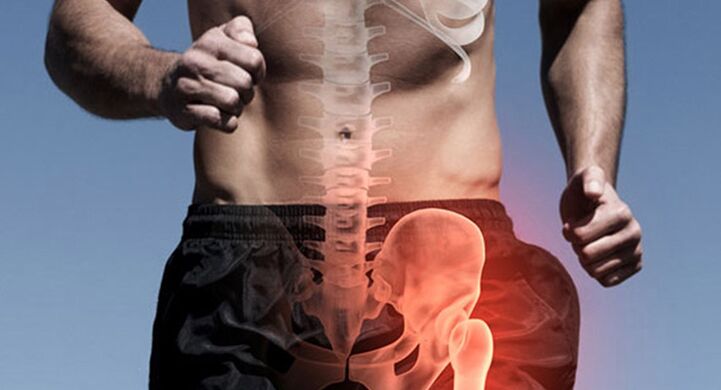
Pain in the right and left hip joints can have other causes:
- injuries - fractures, cracks, dislocations;
- connective tissue damage and autoimmune pathologies;
- osteochondropathy;
- skeletal developmental disorders;
- inflammation.
Sometimes the cause of quite severe pain is damage to other parts of the body (for example, the spine, sacrum, intestines). In this case, treatment should address the underlying problem, and only then will the hip joint stop bothering the person.
Injuries as a cause of pain
Sharp pain affecting just one hip joint may be a symptom of a traumatic injury. It's difficult for a healthy person to break a hip joint, but if you have osteoporosis, it happens regularly. Basically, the diagnosis of "fracture of the femoral neck" is made to women over 60-65 years old, in whom the cause of osteoporosis is menopause and disorders in the functioning of hormone-producing organs. If you have pain in the femoral neck after a fall or a bruise, you absolutely must carry out an instrumental diagnosis!
A car accident can cause a pertrochanteric femoral fracture. Sharp pain appears in the hip joint when the nerves are pinched.
In addition, pain on the right or left appears against the background of:
- contusion of a bony joint due to a fall or direct blow;
- traumatic hip dislocation;
- congenital hip dislocation.
Birth injuries and bone deformities during intrauterine development can cause congenital dislocation. Without treatment, the child's legs may have different lengths in the future and coxarthrosis develops early.
Cause illness in adults and children
If symptoms reappear or pain in the hip joint becomes chronic, they are often caused by systemic pathologies or diseases of the hip joint itself.

In addition to coxarthrosis, the hip joint hurts for the following reasons:
- Purulent arthritis.Occurs due to infection of the thigh region with pyogenic bacteria. Any movement becomes impossible due to sharp pain, the affected area turns red and swells.
- Aseptic necrosis of the femoral head.The reason is poor circulation in the hip joint. The disease mainly occurs at a young age. Without treatment, there is a risk of muscle and tendon atrophy and the person becomes disabled.
- Myositis ossificans.It arises from inflammation of muscles and connective tissue, is associated with heredity or occurs after injury.
- Ankylosing spondylitis.Causes inflammatory damage to the bone joint, leading to limited mobility due to fusion of the joint cavity.
- Osteochondritis dissecans of the femur.The cartilage of the hip joint becomes delaminated and tissue necrosis often develops.
- Bursitis and synovitis.In this case, severe pain in the hip joint is associated with inflammation of the synovial bursa or capsule.
Why do hip joints hurt on one or both sides, what are the other reasons?
The following diseases can be the cause:
- Reiter's syndrome;
- rheumatoid arthritis;
- spinal injuries with radicular syndrome;
- deformities of feet, legs, knees;
- enthesopathy.
In pregnant women, the cause of pain in the right or left joint is often symphysitis - inflammation of the pubic symphysis when the pubic bones diverge. In rare cases, tumors and gout of the hip joint can trigger symptoms in men.
Symptoms of pathologies
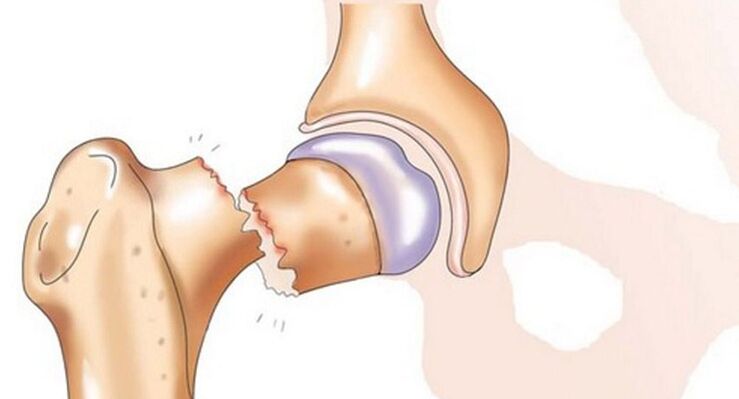
Signs of illnesses, as well as treatment procedures, vary widely. Pain in the hip joint after a serious injury is strong, sharp and localized in the thigh area. The surrounding tissues swell and lameness is observed. The latter, with a slight bruise, goes away quickly. In the event of a dislocation or fracture, leg movements are limited or even impossible.
For a hip fracture, the symptoms are:
- increased pain when moving;
- irradiation of sensations in the inner surface of the leg;
- swelling, bruising;
- lameness;
- common click;
- muscle numbness.
When the bursa or synovial membrane is inflamed, the pain is accompanied by a burning sensation and intensifies when walking. With osteochondrosis, tingling and goosebumps appear in the hip joint. Coxarthrosis is accompanied by painful pain, which is worse in the morning and disappears during the day. With rheumatoid arthritis, the hip joint hurts with lumbago, the temperature inside rises and muscle stiffness appears.
Burning, shooting pain may be a sign of ankylosing spondylitis, and the sensations radiate to the pelvis, sacrum and become stronger at night. Pain in the hip joint in chronic inflammatory diseases - arthritis, gout (no exacerbation).
Diagnosis of diseases
Treatment of any of these symptoms should begin immediately after diagnosis by an orthopedist, surgeon or traumatologist. The doctor may suggest an injury to the left or right hip joint during the initial examination. During passive flexion and extension, pain, burning sensation appear, movements are limited, and abduction to the sides is especially difficult.
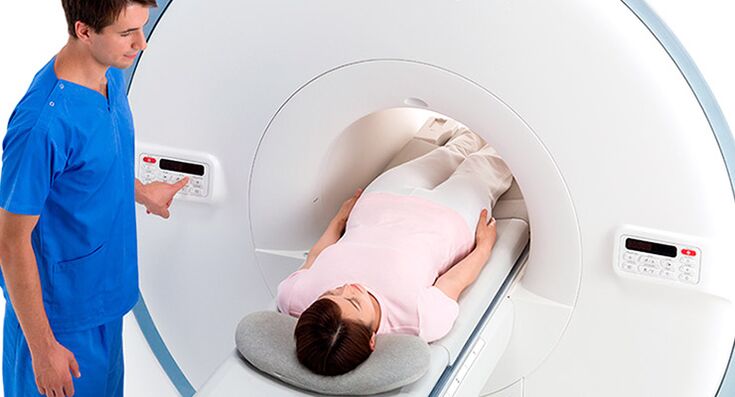
Since the hip joint is located quite deeply, instrumental examinations become the main diagnostic methods:
- CT scan;
- MRI;
- x-ray.
In some cases, it is necessary to carry out additional diagnostic measures. So, in case of infectious and purulent processes, a study of synovial fluid is prescribed. If a malignant tumor is suspected, a biopsy is performed. If the vessels of the hip joint are affected, an ultrasound scan with Doppler ultrasound will be required. Before treating hip joint pain, a rheumatoid factor test should be performed to rule out rheumatism.
Treatment of hip pain due to injuries and infections
In infants, congenital dislocation of the hip joint is treated. To do this, they use a Freik pillow and spacers - special orthopedic devices that help keep the legs in the correct position. The duration of treatment can be 6 to 8 months; if this does not resolve the problem, surgical reduction of the bone will need to be performed.
In case of hip fracture, surgical treatment is indicated, since conservative measures most often do not help. Pins, screws are installed or stents are made. Only if there are contraindications, bandages are applied to the leg from the waist to the heel. Unfortunately, in old age this rarely leads to fusion of the hip bone and the patient cannot walk or even sit normally.
What to do if the hip joint area is very painful due to infectious inflammation? In this case, treatment with antibiotics is carried out. Medicines are administered as injections, given by drip or directly into the socket of the hip joint. Treatment also involves limiting leg mobility to speed recovery. To relieve symptoms, painkillers and anesthetics are injected into the joint. For purulent arthritis, surgery is performed to remove abscesses and wash the joint cavity with antibiotics.
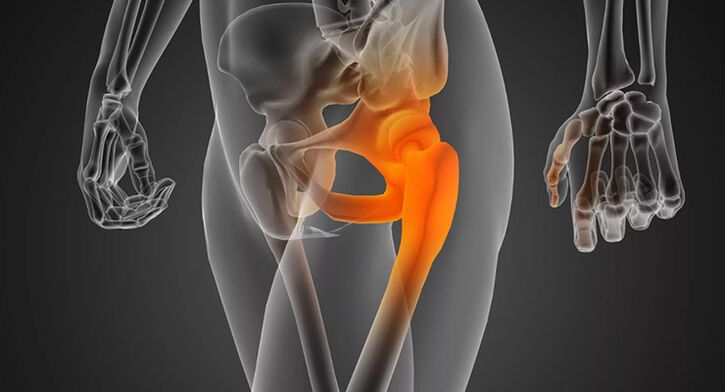
Medication measures
The choice of methods of drug treatment is carried out only by a doctor, depending on the type of disease. The aching pain is usually well relieved by taking painkillers, although the sensations often return quickly. If your leg hurts very and seriously, blockades with anesthetics will have to be introduced into the hip joint area. Treatment of chronic hip pathologies should be carried out with regular courses of nonsteroidal anti-inflammatory drugs - only they will eliminate recurring symptoms, although they will not affect the course of the disease itself. For coxarthrosis, hormonal drugs are usually administered, which relieve inflammation and pain for a long time.
Treatment of hip joint diseases can be carried out using the following means:
- Muscle relaxers.Used to reduce muscle spasms, which increase pain.
- Diuretics.Helps relieve severe swelling affecting soft tissues.
- Vitamin preparations.Improves nutrition of the hip joint, accelerates biochemical reactions.
- Chondroprotectors.They fill the deficiency of chondroitin and glucosamine and help restore damaged cartilage.
If a child regularly suffers from pain in the hip joint and the diagnosis of avascular necrosis is confirmed, the basis of treatment is taking and injections of vascular medications. The drugs improve blood microcirculation, metabolism and help tissues regenerate.
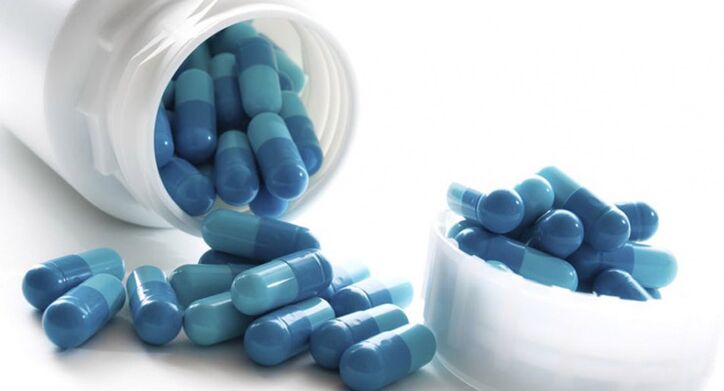
Orthopedic devices and physiotherapy
Treatment of hip joint diseases includes the use of orthopedic products. Most often they are used after injuries, when complete or partial immobilization is required for several weeks or even months. Thus, for fractures, a rigid fixation orthosis is used which, unlike plaster, does not cause irritation or allergies.
If a person has to lie down for a long time, they definitely need an anti-decubitus mattress. During injury rehabilitation, walkers, canes, and crutches are used for support. In case of symphysitis, pregnant women are recommended to wear a pelvic corset with rigid ribs. It is equally important, during treatment and as a preventative measure, to wear orthopedic shoes that relieve the foot.
Physiotherapy is also indicated to improve the condition of the hip joint. This treatment eliminates symptoms, relieves pain and optimizes blood circulation. During treatment, inflammation decreases, swelling disappears, and the process of tissue repair begins. Laser therapy has proven itself well: laser beams heat tissues up to 10 cm thick, quickly relieve pain and relieve inflammation.
Other physiotherapy techniques used are:
- electrophoresis;
- darsonval;
- magnetic therapy;
- shock wave therapy;
- balneotherapy;
- microcurrents;
- turpentine baths.
It is also recommended to regularly use a needle applicator at home: it increases blood circulation and helps reduce pain. In the acute stage of the disease, it is used for 5 minutes up to 5 times a day; in the chronic stage, the duration is increased to 20 minutes three times a day.

Traditional treatment of hip joint pain
Traditional medicine can also explain how to treat hip joint diseases. Unconventional treatment should be combined with conservative treatment, otherwise it will not bring the desired effect. External methods are less effective, because the location of this bone joint is very deep. External measures can be applied through massage.
The processing is carried out as follows:
- mix equal parts mint, hop cones and St. John's wort;
- pour 100 ml of vaseline melted in a bain-marie onto a spoon;
- leave in a warm place for 2 days;
- Heat the mass again, filter;
- Apply by gently rubbing with massage movements.
Baths can be used in the treatment of the hip joint - they quickly relieve pain. A decoction of mint and pine needles (50 g of raw materials per liter of water) is poured into warm water, a bath is taken for 15 minutes, the procedures are repeated every other day, 10 sessionsare carried out. You should also take the following pain relievers internally:
- Pour ½ cup of lilac flowers into 250 ml of vodka, leave for 10 days, drink a teaspoon three times a day for 14 days;
- mix a tablespoon of birch buds and linden flowers, brew 300 ml of boiling water, drink 150 ml twice a day for a month;
- boil 1 kg of beef bones, pour the broth into portioned containers, eat 250 g of this "jelly" daily.
Other treatments
If the hip joint is affected, therapeutic exercises are indicated. The joint of the bones must move, it will then produce a greater volume of intra-articular fluid. As a result, the quality of nutrition and the rate of tissue restoration will increase. The set of exercises is selected individually, it is different for different diseases (depending on the permissible load). At first, the number of repetitions is low, then it increases. You should not make sudden movements - they can provoke a new attack of pain.

In some cases, surgical treatment of the hip joint is necessary. It is indicated for injuries, advanced forms of coxarthrosis, rheumatoid arthritis, which cause serious bone deformities. They also operate on a limb when abscesses (ulcers) appear in the joint cavity or in the soft tissues.
The most popular types of operations are:
- stents;
- installation of pins;
- arthroscopy;
- osteotomy;
- osteosynthesis.
Prevention of joint diseases
Pain in the hip joint can be avoided if preventive measures are taken in time. It is necessary to avoid significant loads on the femur and joint, protect yourself from impacts, falls and not lift heavy objects. From the initial stage, it is necessary to treat all inflammatory diseases of the body and control vascular problems.
Gymnastics, exercise therapy, yoga and swimming will help strengthen the hip joint. It is important to maintain a normal weight so as not to overload the femoral neck and the entire hip joint. To reduce body weight, adopt a diet that avoids fatty, sweet, floury foods, smoked meats and salty foods. It is also beneficial for the hip joint to wear preventive bandages, comfortable shoes and insoles. When the first unpleasant symptoms appear, you should immediately consult a doctor and receive timely treatment - this will help avoid surgical intervention.













































